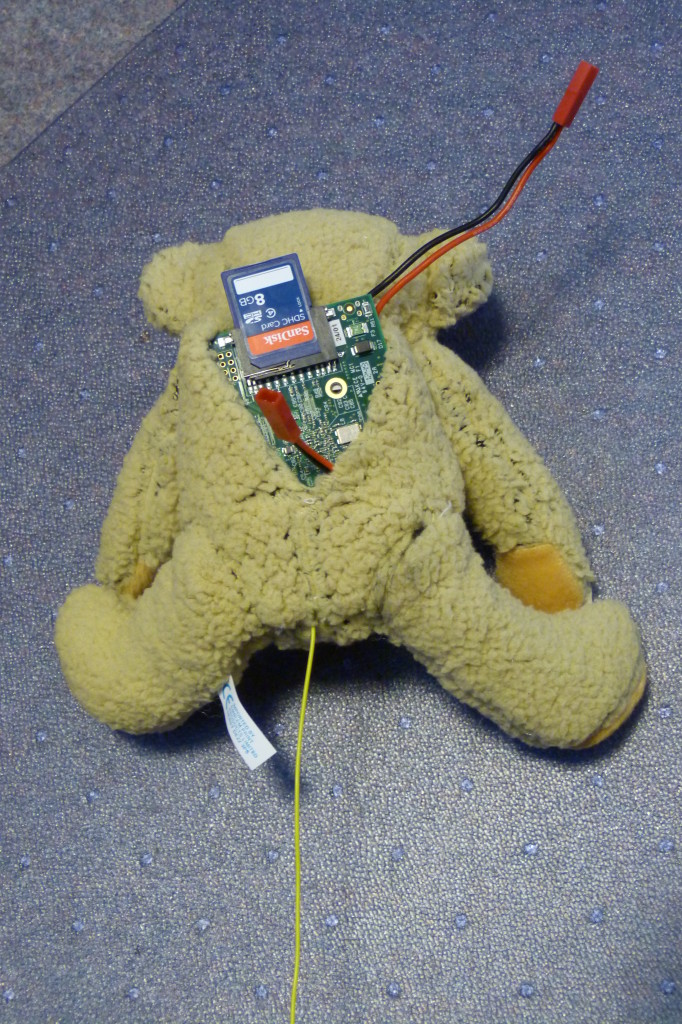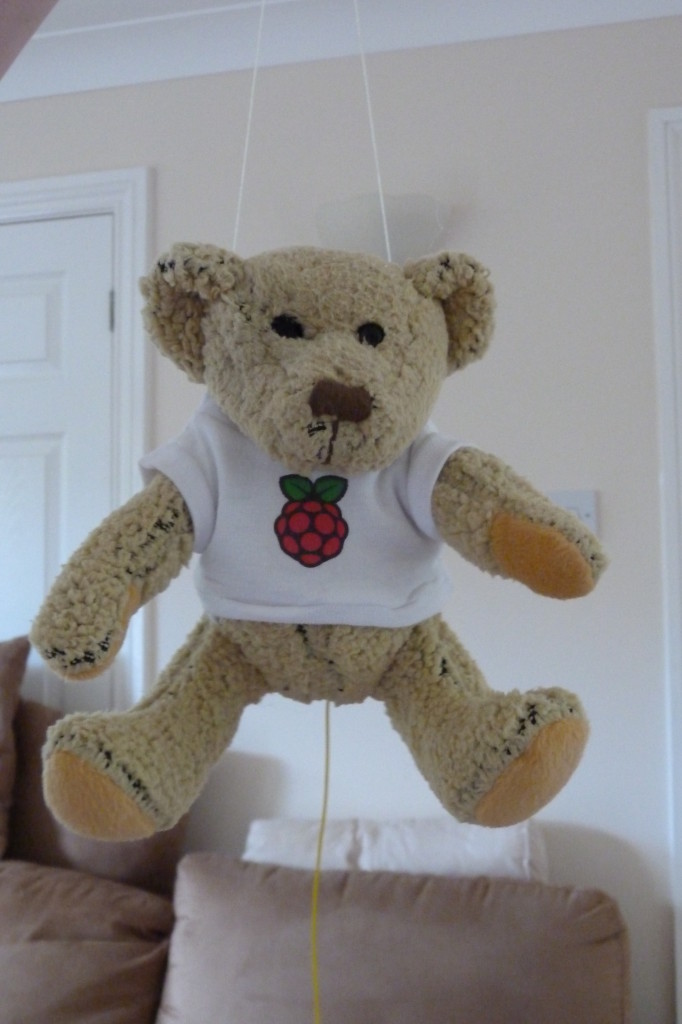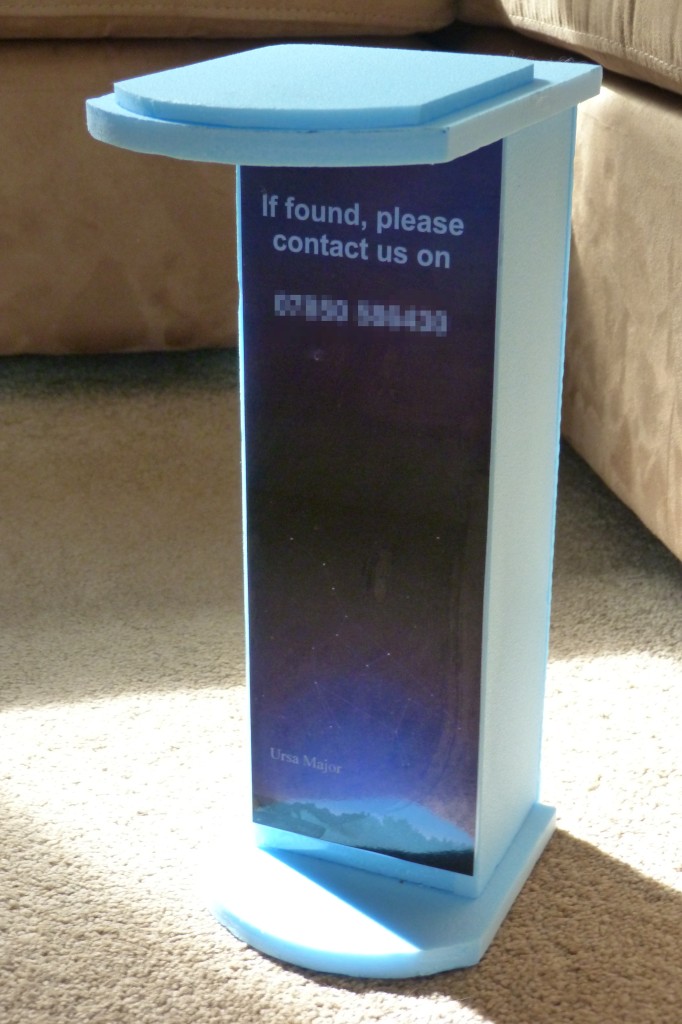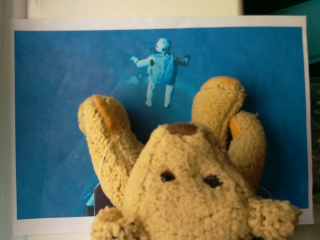| Liz: Today we’ve got a guest post from our old high-altitude-ballooning friend Dave Akerman (just as well, really, because I’ve got really bad backache and am having to make a little nest of pillows to sit in before I can type without wincing). Tomorrow morning, Eben and I are rising with the lark to drive over to Berkshire, where we’ll be “helping” Dave launch another Pi-enabled balloon. This time, the payload is someone who may look familiar to you, and he’s going to try to replicate a world record. This is cross-posted from Dave’s own blog, where you’ll also find much more information about tracking this flight from home if you’d like to follow us along tomorrow. We selected Babbage as the Raspberry Pi bear (you can buy your own Babbage here) because as well as being cute and cuddly, he’s just the right size to fit a Pi inside. I’ll let Dave explain what he did once he’d scooped Babbage’s innards out (I had an email in which Dave described those innards as “the right stuffing”), and why. Thanks Dave! My next flight is an attempt to reproduce Felix Baumgartner's record-breaking skydive as part of the Red Bull Stratos project, albeit on a slightly smaller scale. The flight is due for launch about 10:30am this Saturday morning from Berkshire. Landing prediction is a few miles SW of Newbury. You can follow the flight using these links: Live streams from launch site Chase car 1 and Chase car 2 So, here's how the 2 projects stack up:
So whilst this project won't be manned (just beared), and doesn't have the same sort of budget, it does aim to exceed Felix's flight in one regard – altitude – albeit by a mere 31 metres. "Babbage" is of course the Raspberry Pi mascot (buy your own here), but with one or two minor changes. The first change is to add a GPS/radio tracker so we know where he is throughout the flight, including where he lands so he can be recovered. The second is to give him the ability to take photographs during his flight, and transmit those down to the ground. To do these, I first replaced his right eye with a Pi camera. This part of the operation was easier said than done – those eyes are very well fixed in so kiddies don't pull them out and choke on them – and I had to use some decidedly non-surgical implements to complete the task. That done, I trimmed the eye hole (I hope you're not feeling squeamish!) with wire cutters. I then placed a Raspberry Pi Camera behind the now vacated eye socket and fixed it in with a magical settable rubber called Sugru. After leaving that to set I could insert the rest of Babbages's upgrade package:
So here we have a model A Raspberry Pi (sans almost all of the connectors), GPS receiver, batteries and a radio transmitter. Only item missing here is an aerial which was added later. The next pic is near the end of the procedure, with the aerial protruding from the logical place.
The GPS receiver is in his left ear, and there are 2 batteries down each leg. The camera is connected and it only needs those 2 JST connectors to be mated and he'll take and transmit images from his new eye. With his shirt back on, and a harness around his shoulders, here's the completed Bionic Bear:
So, with Babbage ready for action, it was time to build his capsule. What I wanted to do was replicate the great downward view of Felix's jump as he left the capsule and disappeared towards the Earth, and this meant placing a camera directly above Babbage's head. He also needed a step to rest on, carefully sized so that once he is released (by cutting a supporting nylon cord) he wall-falls forward. The rest of the design was basically to join those items up with a box section to hold the tracker and batteries:
Note the picture of the star constellation that Babbage's capsule is named after! The height of the capsule was designed to replicate the view from Felix's overhead camera:
The mission is now planned for Saturday 24th August. Babbage will be tied to the capsule using nylon cord running through a device that will release him at 39,000 metres, when he will descend with his own parachute. Both Babbage and Ursa Major will take and transmit photographs throughout the flight, except for two periods. The first is when they reach an altitude of 38km, when they will both take videos for 8 minutes (plenty enough time to reach 39km when Babbage will drop). They will also switch to video for their landings. Fingers crossed that it all goes well! |
A Semi-automated Technology Roundup Provided by Linebaugh Public Library IT Staff | techblog.linebaugh.org
Friday, August 23, 2013
Ted Bull Stratos: Babbage’s leap of faith
Subscribe to:
Post Comments (Atom)





No comments:
Post a Comment